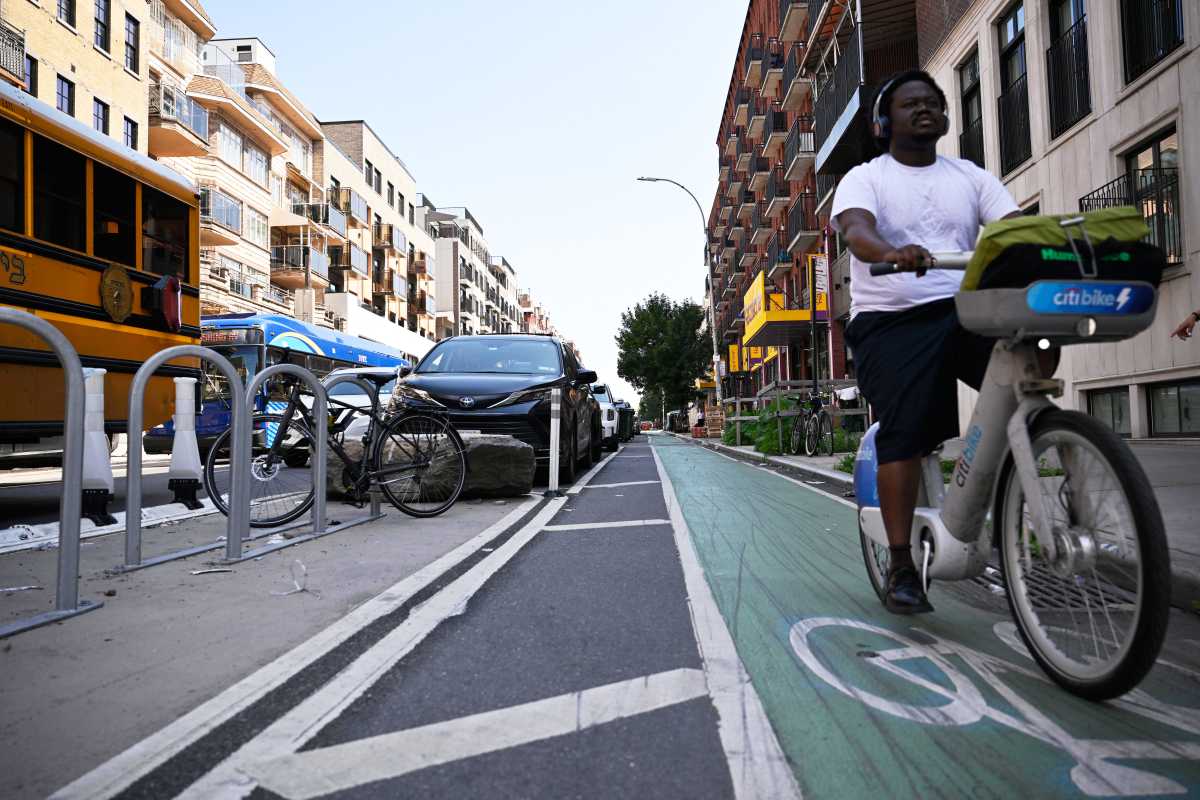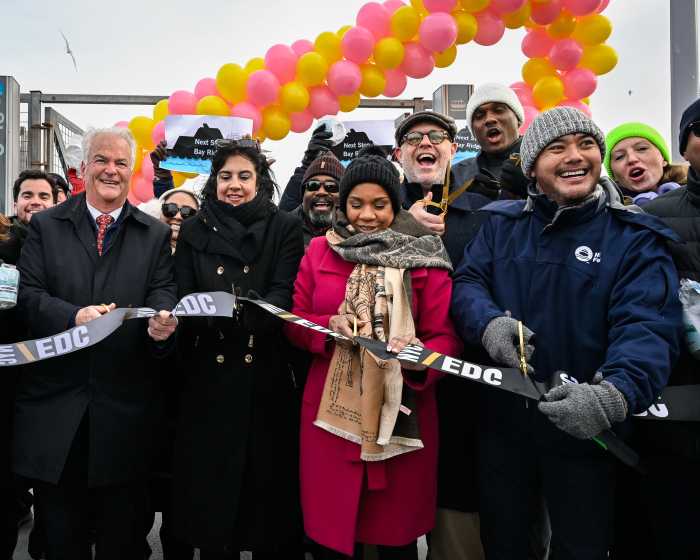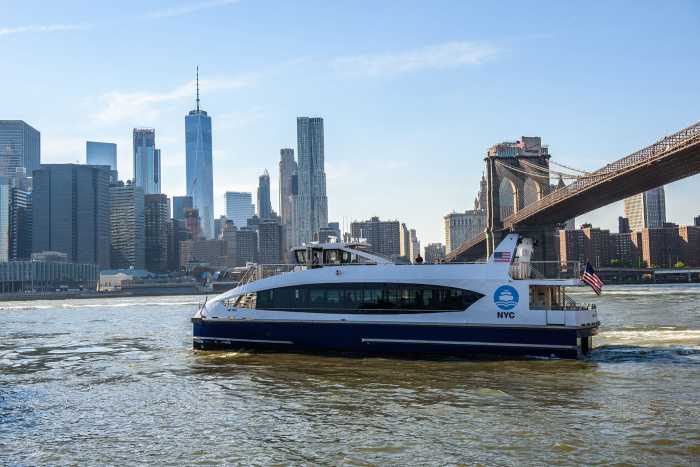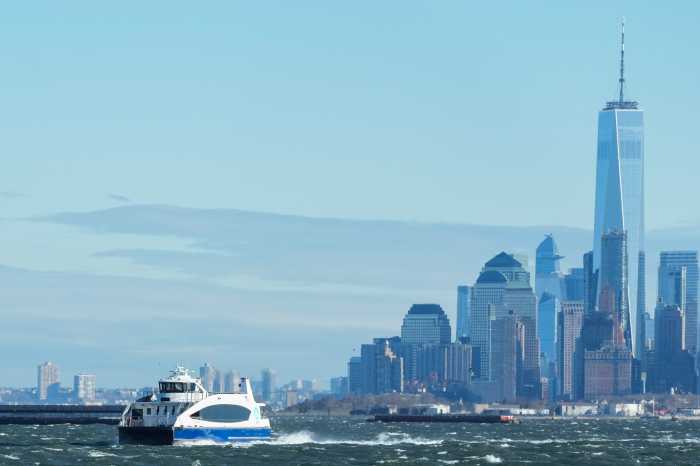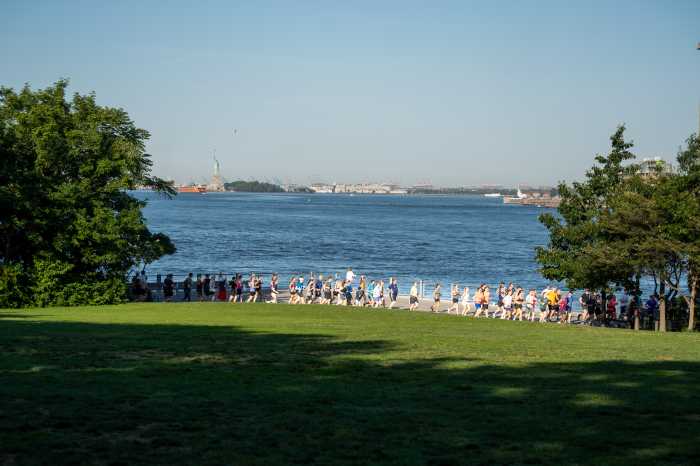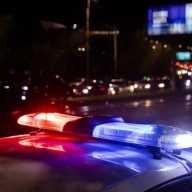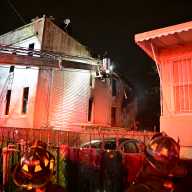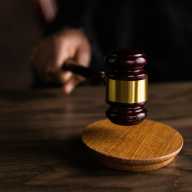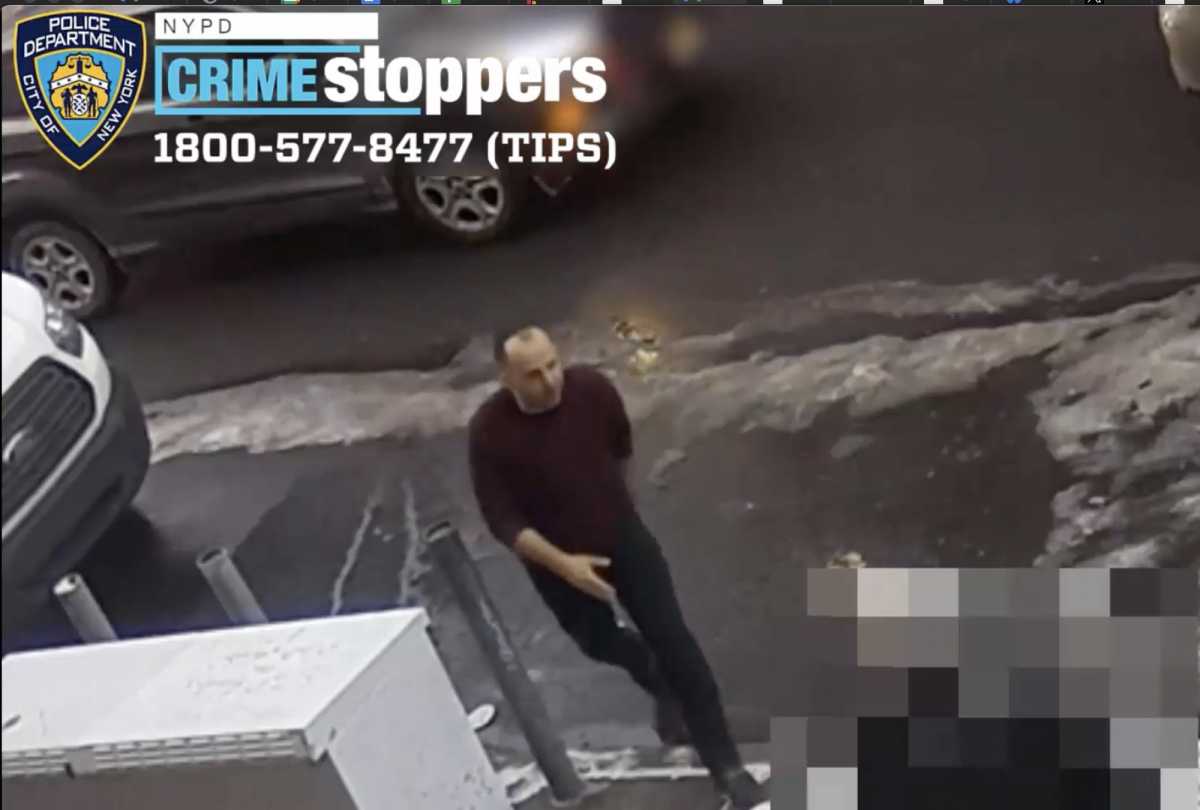Mayor Eric Adams will be allowed to remove part of the Bedford Avenue protected bike lane, a Brooklyn judge ruled on Wednesday.
In her July 9 decision, Judge Carolyn Walker-Diallo said the administration’s reasons behind removing the lane were “rational,” and that since it will be replaced with a traditional non-protected bike lane, and that it is not considered a “major transportation project” that would have required advanced notice to local elected officials and community boards.
The Department of Transportation has found that injuries are down 47% on Bedford Avenue between Flushing and DeKalb avenues, since the protected bike lane was installed last fall, according to court documents.
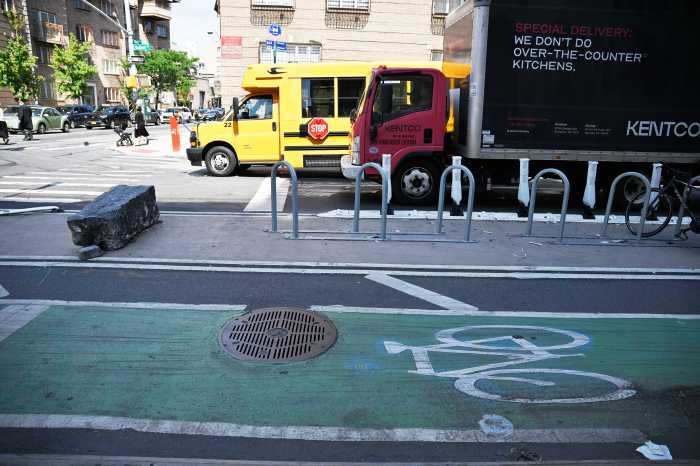

But, Walker-Diallo wrote, the city argued that there have been “multiple reports of collisions between cyclists and pedestrians, particularly children,” in the lane, and believes that an unprotected bike lane will be safer.
“It is clear that the parties have deeply divergent views on what is best for the community regarding the bike lane modification,” she said. “However, the parties’ differences of opinion concerning this issue does not demonstrate that the [city’s] decision was arbitrary and capricious, or unsupported by the evidence.”
Walker-Diallo concurrently dismissed a lawsuit filed against the city by advocacy group Transportation Alternatives and Brooklynite Baruch Herzfeld and his 12-year-old son, and ended a temporary restraining order that had prevented the city from moving forward with the removal.
“Deeply disappointed that the Court has ruled that the City may move ahead with its decision to remove the Bedford Avenue [protected bike lane],” wrote Peter Beadle, the lawyer who represented Herzfeld and TransAlt, said on X. “As the [DOT]’s own report stated, this will make a Vision Zero corridor less safe and expose the City to liability.”
According to court documents, DOT in June said that removing the lane would “likely reduce overall safety along the corridor” and that there could be “potential legal consequences for going back to a known less-safe design.”
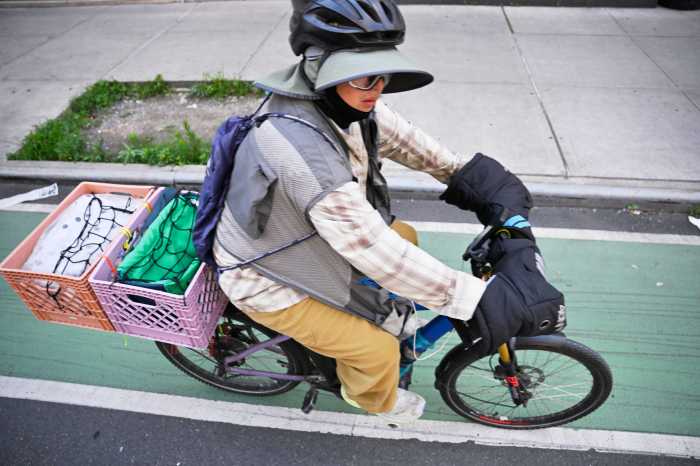
Adams announced that DOT would remove the protected lane between Flushing and Willoughby avenues in June, after months of outcry from the local Orthodox community, and weeks after Adams hosted a town hall in the area.
Cyclists have hit several children in the lane since it was completed last fall. Video of several of the incidents show the victims stepping into the lane from between parked cars, after exiting buses or vehicles midblock.
In court documents, DOT Deputy Commissioner for Transportation Planning and Management Eric Beaton said that Hatzalah had responded to 12 collisions involving a pedestrian or a cyclist in the first five months of 2025, but noted that most of those incidents had not been reported to police and were not accounted for in DOT or NYPD data.
Court documents show that DOT installed additional bus loading zones in the area, but that they “did not achieve their full function” as they were often blocked by illegally parked cars or ignored by bus drivers.
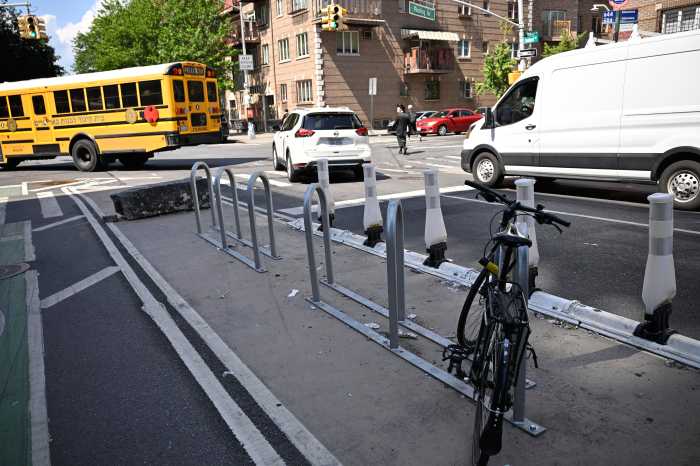
Beaton wrote that DOT “considers the existing context and use of the street,” and that bus drop-off patterns in the area are “uncommon elsewhere in the city. Removing the protected bike lane could “reduce potential conflicts between cyclists and pedestrians — particularly young children,” he added.
“After several dangerous incidents — many of which involved children — the Adams administration listened to the community’s concerns and moved to reconfigure the bike lane to its original model while still maintaining safety measures,” said City hHall spokesperson Sophia Askari, in a statement. “Following a needless back-and-forth with elected officials who disregarded the needs of their own constituents, we are grateful that the judge dismissed this case and is allowing us to move forward with reconfiguring the bike lane. The families of Williamsburg can now rest assured that their children are safe just steps from their homes.”
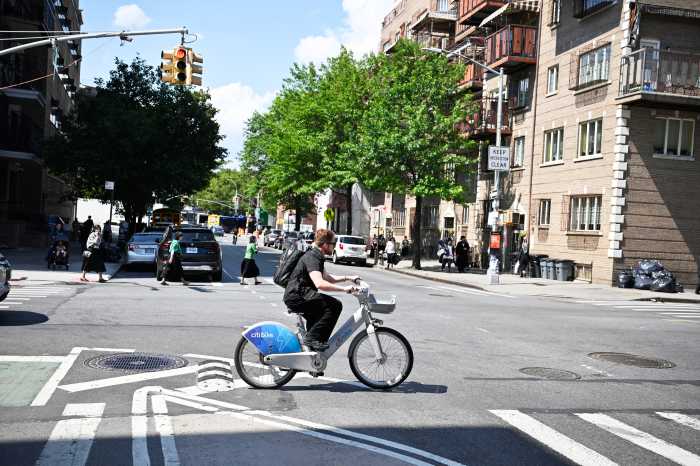
The administration, in its response, appeared to take aim at local elected officials including council members Lincoln Restler and Chi Ossé, who criticized Adams’ decision to remove the lane and said they had not been informed ahead of time.
“Burech Hashem,” wrote local social media account Williamsburg News. “Court dismissed the case against removing the Protected Bike Lane on Bedford Avenue, allowing the @NYCMayor to go ahead with taking out the dangerous design that caused multiple accidents to children and others.”
The agency had proposed alternatives to removing the lane — such as diverting it off of Bedford Avenue between DeKalb and Flushing avenues, documents show.
Ben Furnas, executive director of Transportation Alternatives, said he was “frustrated” by the decision, and “incensed” by Adams’ choice.
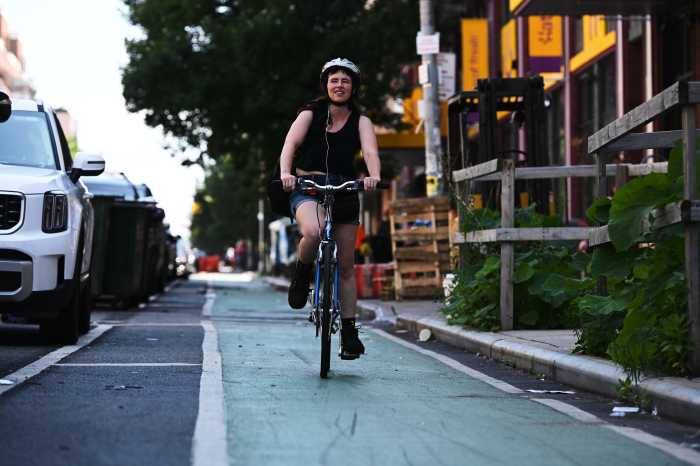
“Treating this as a mere ‘modification’ to a bike lane is an insult to decades of work and thousands of pages of research that prove that protected bike lanes save lives,” he said in a statement. “To pretend a protected bike lane and a line of paint between bikes and speeding cars are the same thing is a slap in the face to families who have lost loved ones in crashes.”
He urged Adams to follow DOT’s alternative plans, rather than removing “proven safety measures.”
“We are committed to fighting for the safety of all New Yorkers and all New York City streets, and are exploring our options as to how to move forward to protect Brooklyn families in spite of Mayor Adams’ reckless, politically motivated backtracking,” Furnas said.
Update 7/9/25, 3:37 p.m.: This story has been updated with comment from City Hall.


